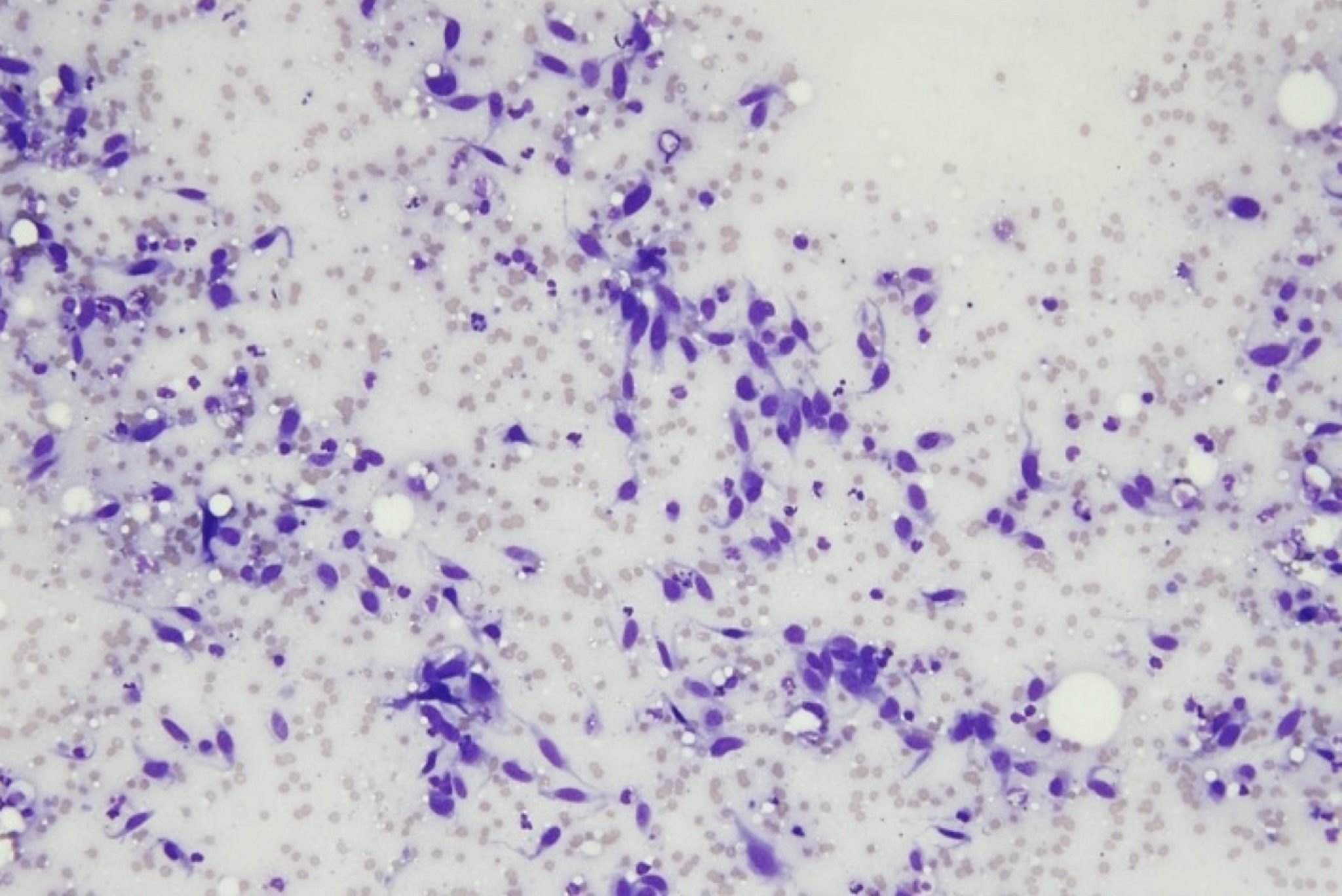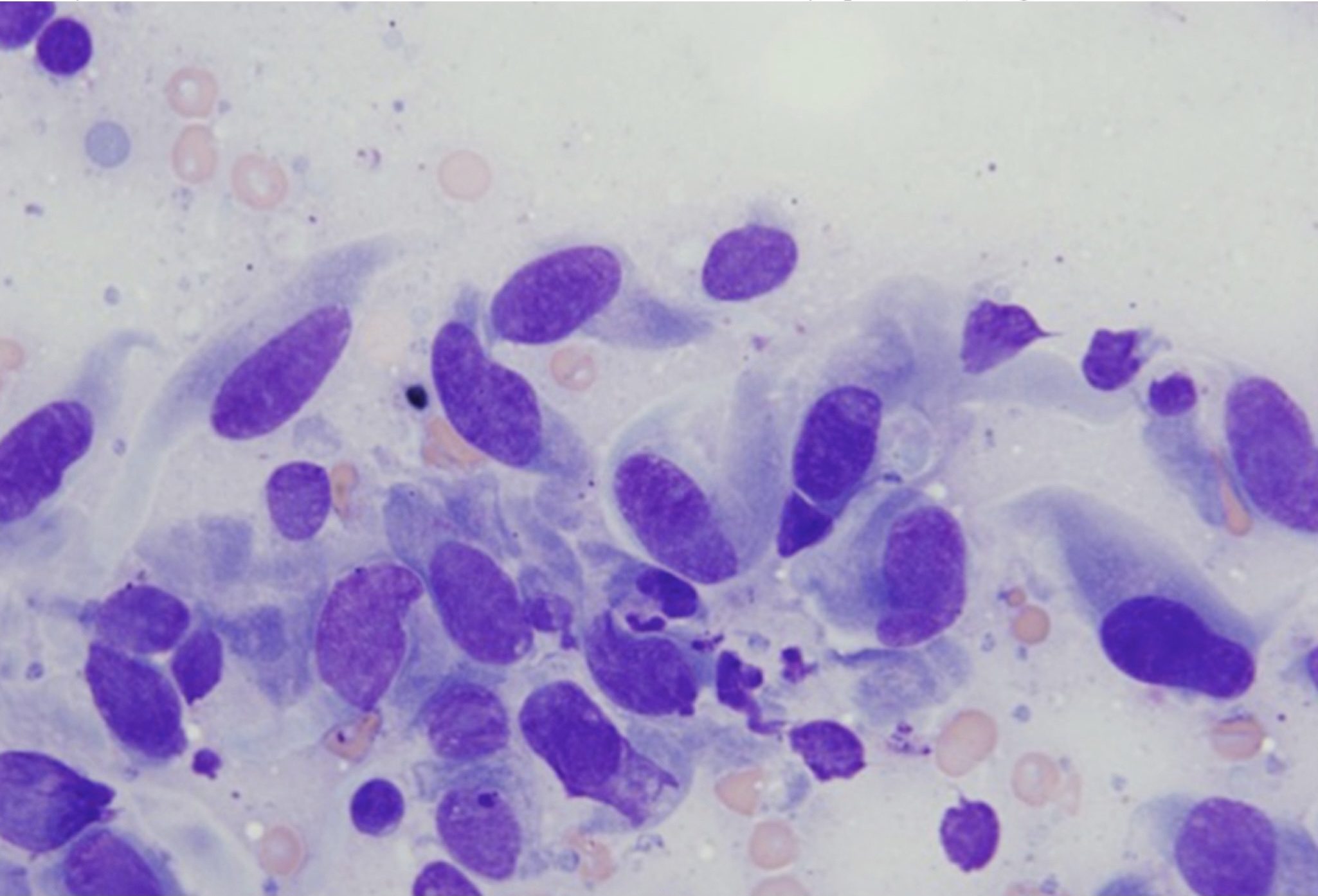Spindle Cell Tumors
Mesenchymal spindle cell tumors may not exfoliate well, as cells are embedded in extracellular matrix. Cells are generally individual rather than adherent, fusiform, and have indistinct cell borders. Nuclei are often elongate and cytoplasmic tails may fade into the background. Differentiation according to tissue of origin is sometimes possible- for example, there may be evidence of collagen, cartilage, bone, fat, or myxomatous material formation by the tumor cells. In general, benign spindle cell tumors are indicated by the suffix “-oma”, for example, fibroma; malignant mesenchymal tumors are called sarcomas, for example, fibrosarcoma (see Fig. 5.14 for well differentiated spindle cells and Fig. 5.15 for spindle cells with malignant features).


Cell forming connective tissue, fat, muscle, bone, lymphatics, andblood vessels.
Malignant neoplasm of mesenchymal origin, e.g. osteosarcoma.

